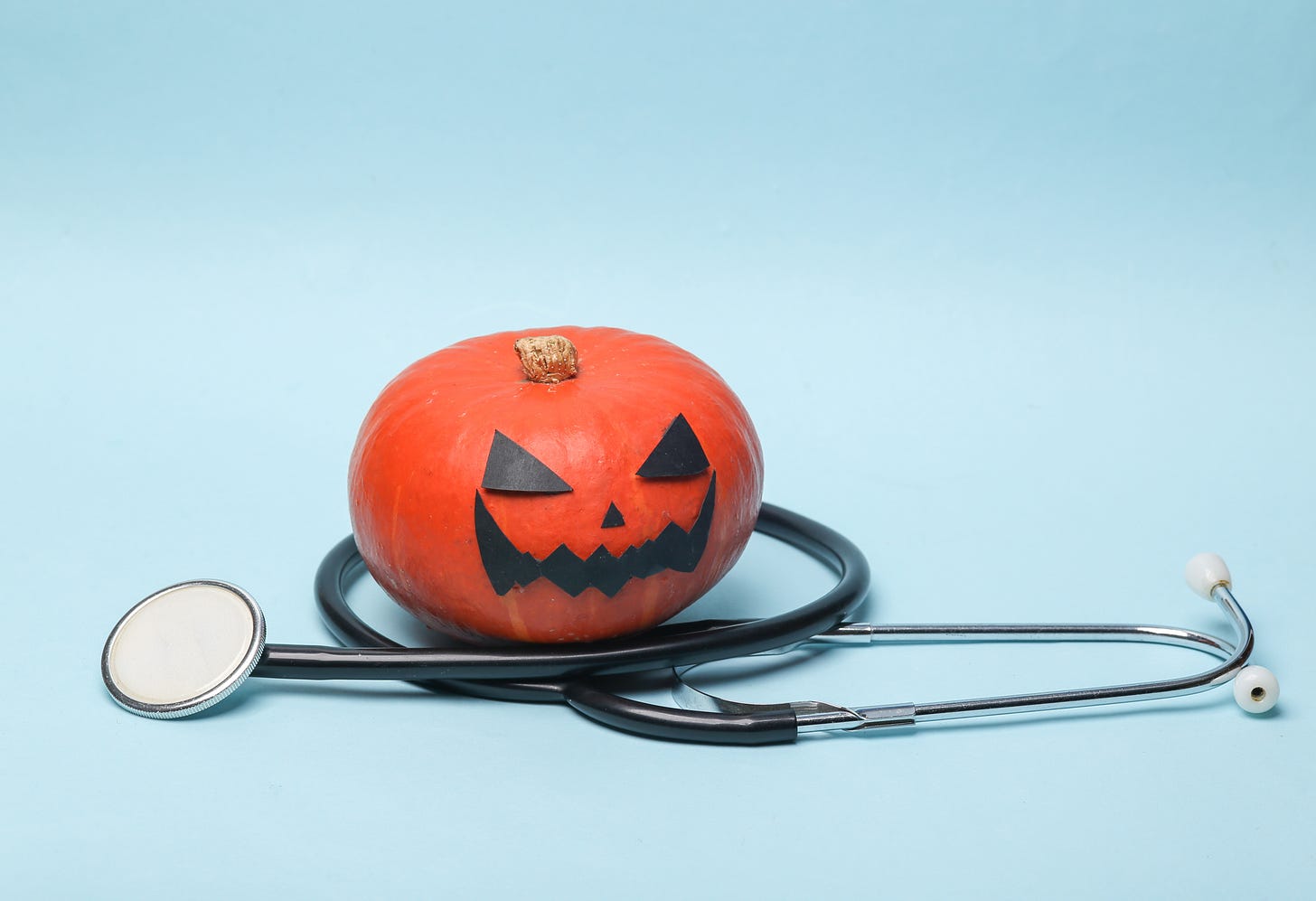Halloween, peanut allergies, and more
Halloween is around the corner, making us wonder how halloween affects your kid's health
Halloween is around the corner, and almost every Halloween we sit down and think about how Halloween may affect your health—in particular, your kid’s health.
One thought we had recently was that rates of anaphylactic allergic reactions stemming from peanut ingestion may go up on Halloween. This could be true for kids or adults with known peanut allergies, who might accidentally ingest a candy with peanuts or be affected by cross contamination. Or, it might be the first time that a severe peanut allergy presents itself for someone (probably someone young) who didn’t know that they were allergic to peanuts.
As we thought about looking into this question ourselves, we found out that others had beat us to the punch! Here’s what they found.
Researchers in Canada wanted to study the impact of Halloween—and other holidays—on cases of severe anaphylactic allergic reactions to nuts. The motivation for the study was that nut allergies are common, and on holidays where there’s a lot of nut-containing candy, kids with nut allergies might be more likely to accidentally eat something they’re allergic to.
It’s easy to imagine an enthusiastic child on Halloween trying a new candy without realizing it contained nuts. Anaphylactic reactions are very dangerous. They can lead swelling in the airways, preventing breathing, and they can also lead to shock, where oxygen cannot reach the body’s tissues.
In their 2020 study, researchers studied 1,390 cases of nut-related anaphylactic reactions diagnosed in children in emergency departments across 4 provinces. They found that compared to the rest of the year, nut-related anaphylaxis rates were, depending on the nut and holiday, about 45-99% higher on candy-intensive Halloween and Easter (and a few days after) compared to other days of the year. Meanwhile, there were no significant differences on other, less-candy-intensive holidays like Christmas, Diwali, Chinese New Year, or Eid al-Adha.
The study technically only told us that there was something happening on Halloween and Easter that was sending more kids to the hospital with anaphylactic reactions to nuts. But of course, the most reasonable explanation for this is kids with allergies eating nut-containing candy (or perhaps other nut-containing sweet treats) that they otherwise would not have eaten on a typical day.
Beyond anaphylaxis
Of course, there are other potential health effects of Halloween and Halloween candy beyond anaphylaxis. Here’s another idea that we explored.
Eating too much candy might make most kids feel unwell, but for children with diabetes—and kids who don’t yet know they have diabetes—massive amounts of candy could land them in the hospital with dangerously high blood sugar levels, including in the form of life-threatening diabetic ketoacidosis, or DKA. Some time ago we looked into this, finding that, fortunately, there was no increase in DKA hospitalizations around Halloween.
Other health risks to kids include pedestrian injuries while they’re trick or treating—research suggests Halloween is the most dangerous day of the year for child pedestrians, supporting efforts by many neighborhoods to close off areas to vehicle traffic to allow kids to safely walk from house to house. In Boston’s Charlestown neighborhood where Chris lives, the National Park Service and Boston Police close streets around the Bunker Hill Monument for safe trick or treating. Halloween, along with other holidays where there’s a change in the routine, also seem to place kids at higher risk of everyday injuries as well.
But beyond the immediate health effects, it’s easy to wonder whether the celebration of candy on Halloween might have long term health effects. If, over many years, children begin to associate candy with the happiness and excitement of Halloween, might they be more likely to consume more candy over their lifetimes? This would be a very difficult question to study, but one could try to take advantage of circumstances where kids, by chance, find Halloween less exciting.
Given that Halloween celebrations in the year 2020 (and perhaps to a lesser extent, 2021) were attenuated due to COVID-19, we wonder if kids who experienced these less exciting celebrations might find candy less enthralling over their lifetimes. On the flip side, COVID-19 really only significantly impacted one or two Halloweens, giving kids plenty of exposure in other years. And of course, there are many other factors besides Halloween that contribute to kids’ interest in candy, such as their overall diet, whose impact could dwarf any impact of Halloween.
Regardless, we look forward to taking our kids trick or treating this year and letting them pig out on candy (well, to a point). There may be some health risks, but the value of participating in the fun, community-building neighborhood tradition is well worth those risks in our eyes.








What is the reason for the increasing number of peanut allergies? Back when I was in school (in the 60's) the was no one that had a peanut allergy. I' don't discount the possibility that those kids didn't live long enough to go to school, but somehow I don't think that's the answer.
So would this be a feather in the cap of the Hygiene Hypothesis? Should we stop worrying so much about the "germs" and dirt that our babies are getting into? I know the Hygiene Hypothesis has been around for quite some time, and over the years it has fallen in and out of favor. What's the current feeling on it?